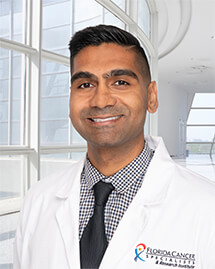Exagamglogene Autotemcel for Severe Sickle Cell Disease
Dr. Anjan Patel's Thoughts
Very exciting development in CRISPR-based therapy for transfusion-dependent sickle cell disease (SSD). 100% of patients avoided hospitalization for occlusive crisis. Long-term risks and concern for off-target gene editing will remain a concern. An argument can be made that for frequently admitted patients that this could be cost effective.
BACKGROUND
Exagamglogene autotemcel (exa-cel) is a nonviral cell therapy designed to reactivate fetal hemoglobin synthesis by means of ex vivo clustered regularly interspaced short palindromic repeats (CRISPR)–Cas9 gene editing of autologous CD34+ hematopoietic stem and progenitor cells (HSPCs) at the erythroid-specific enhancer region of BCL11A.
METHODS
We conducted a phase 3, single-group, open-label study of exa-cel in patients 12 to 35 years of age with sickle cell disease who had had at least two severe vaso-occlusive crises in each of the 2 years before screening. CD34+ HSPCs were edited with the use of CRISPR-Cas9. Before the exa-cel infusion, patients underwent myeloablative conditioning with pharmacokinetically dose-adjusted busulfan. The primary end point was freedom from severe vaso-occlusive crises for at least 12 consecutive months. A key secondary end point was freedom from inpatient hospitalization for severe vaso-occlusive crises for at least 12 consecutive months. The safety of exa-cel was also assessed.
RESULTS
A total of 44 patients received exa-cel, and the median follow-up was 19.3 months (range, 0.8 to 48.1). Neutrophils and platelets engrafted in each patient. Of the 30 patients who had sufficient follow-up to be evaluated, 29 (97%; 95% confidence interval [CI], 83 to 100) were free from vaso-occlusive crises for at least 12 consecutive months, and all 30 (100%; 95% CI, 88 to 100) were free from hospitalizations for vaso-occlusive crises for at least 12 consecutive months (P<0.001 for both comparisons against the null hypothesis of a 50% response). The safety profile of exa-cel was generally consistent with that of myeloablative busulfan conditioning and autologous HSPC transplantation. No cancers occurred.
CONCLUSIONS
Treatment with exa-cel eliminated vaso-occlusive crises in 97% of patients with sickle cell disease for a period of 12 months or more. (CLIMB SCD-121; ClinicalTrials.gov number, NCT03745287.)
